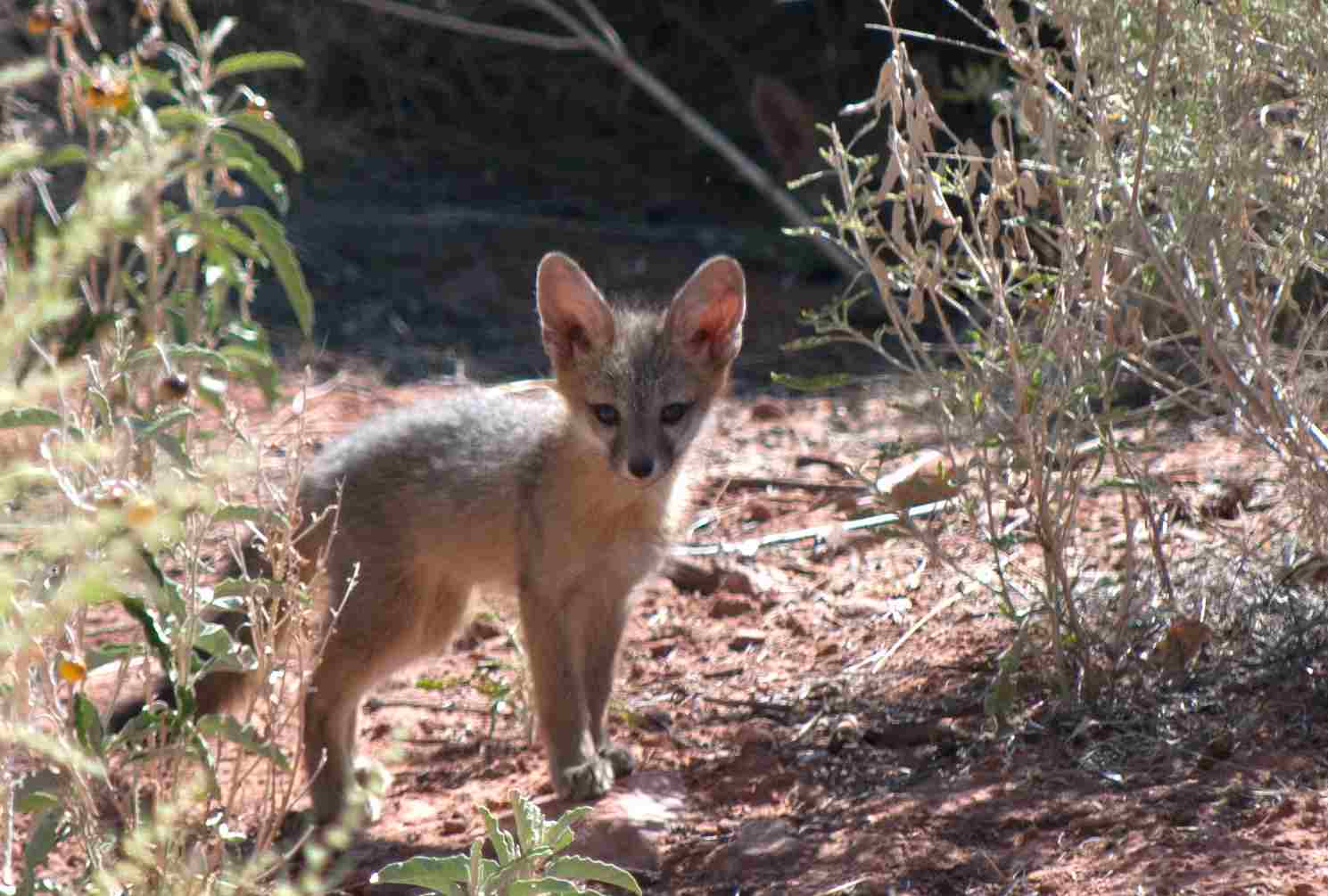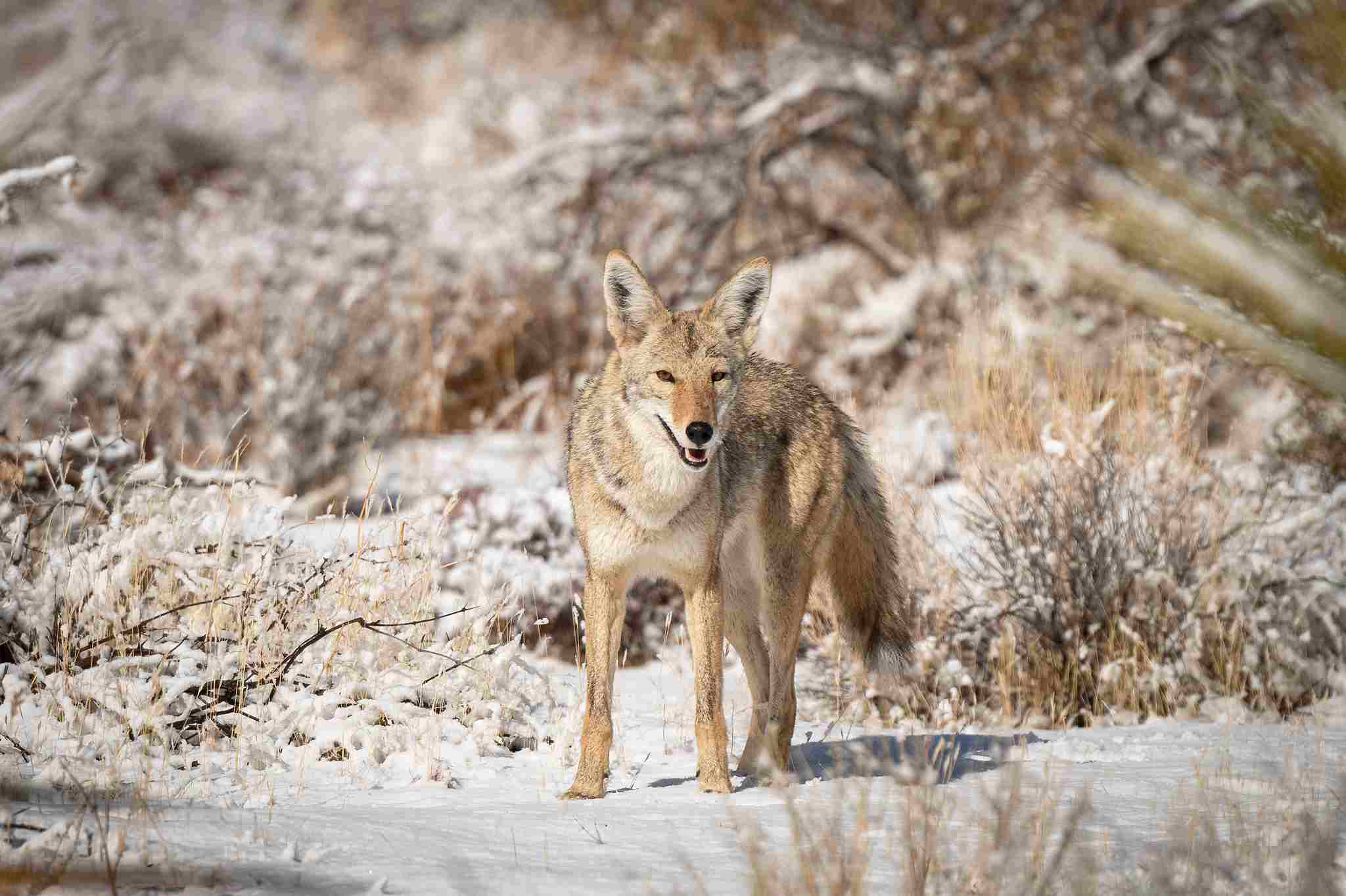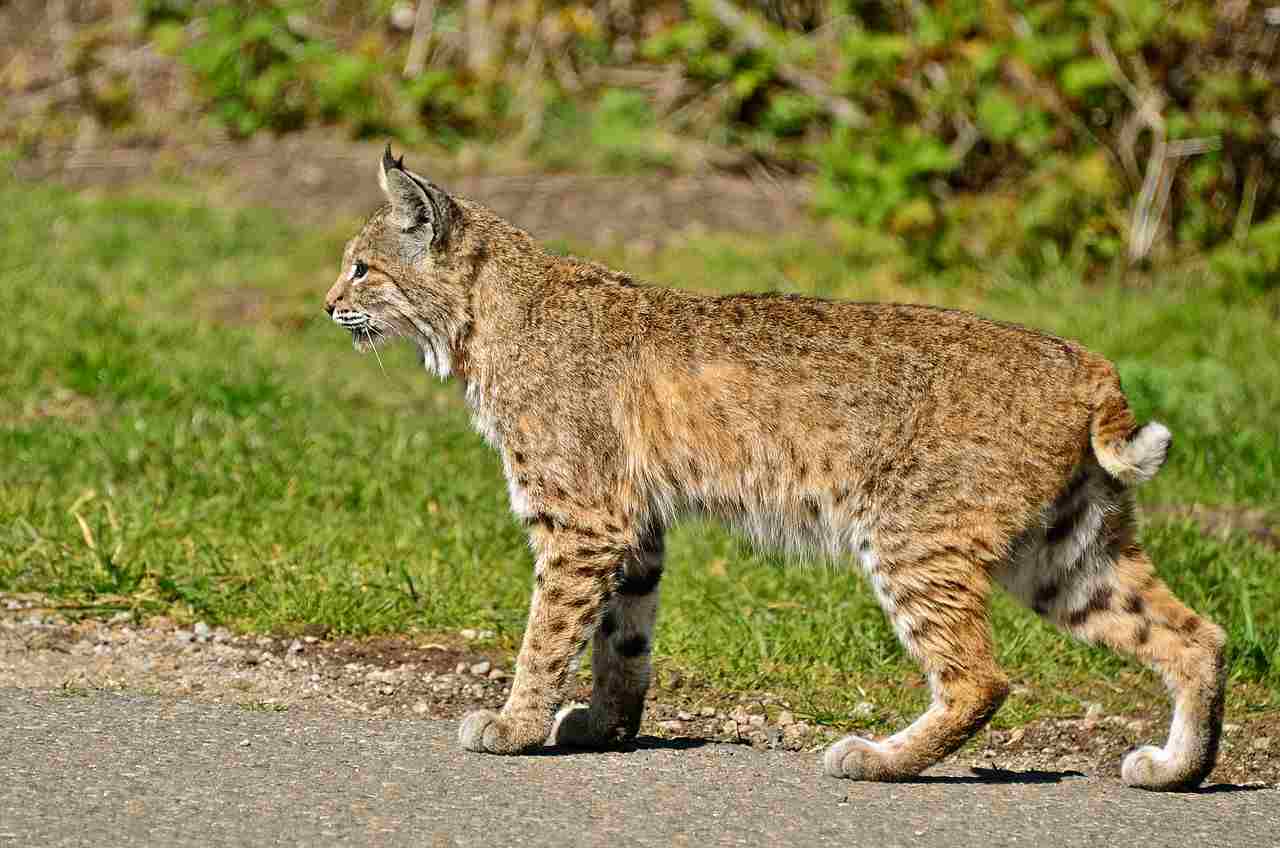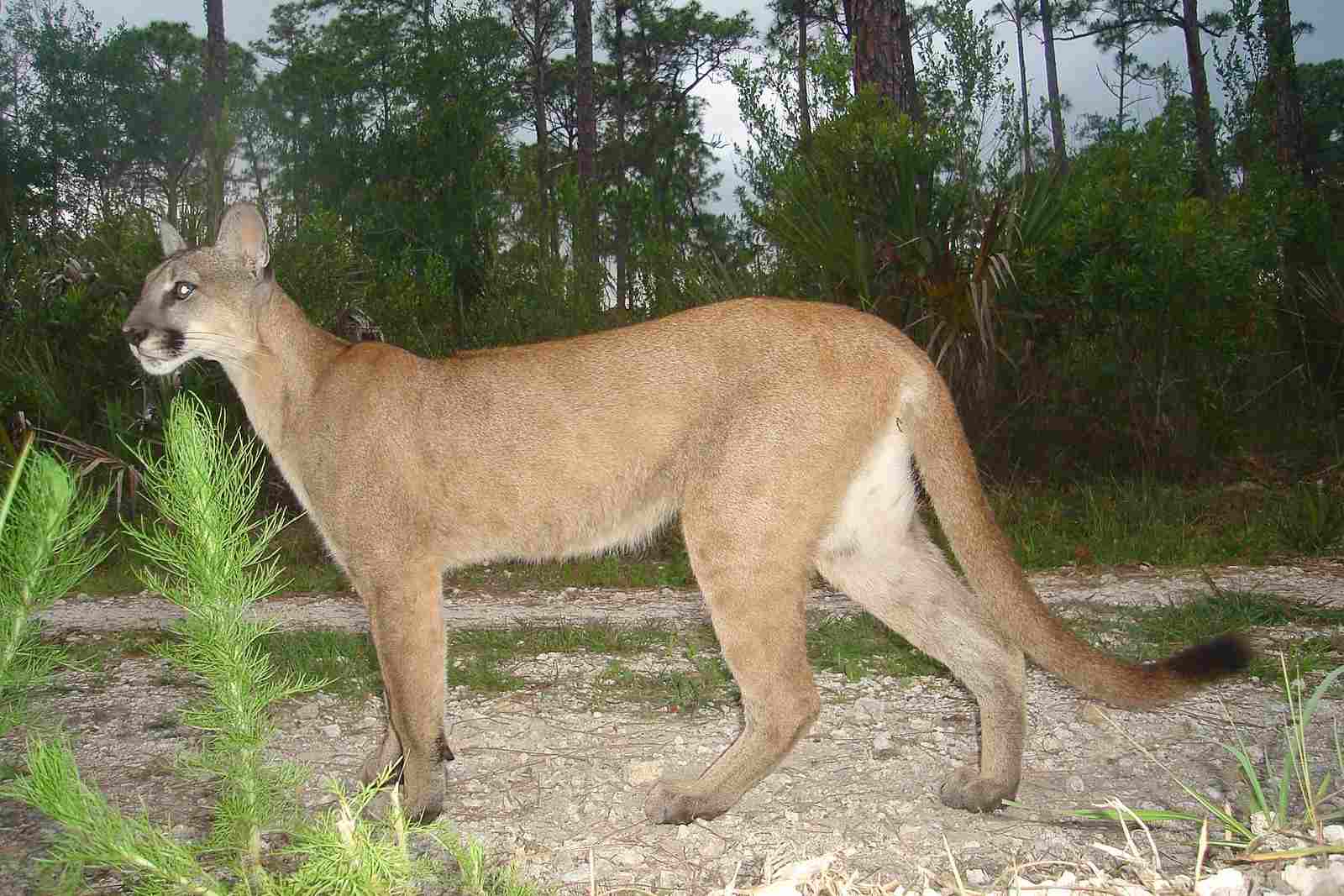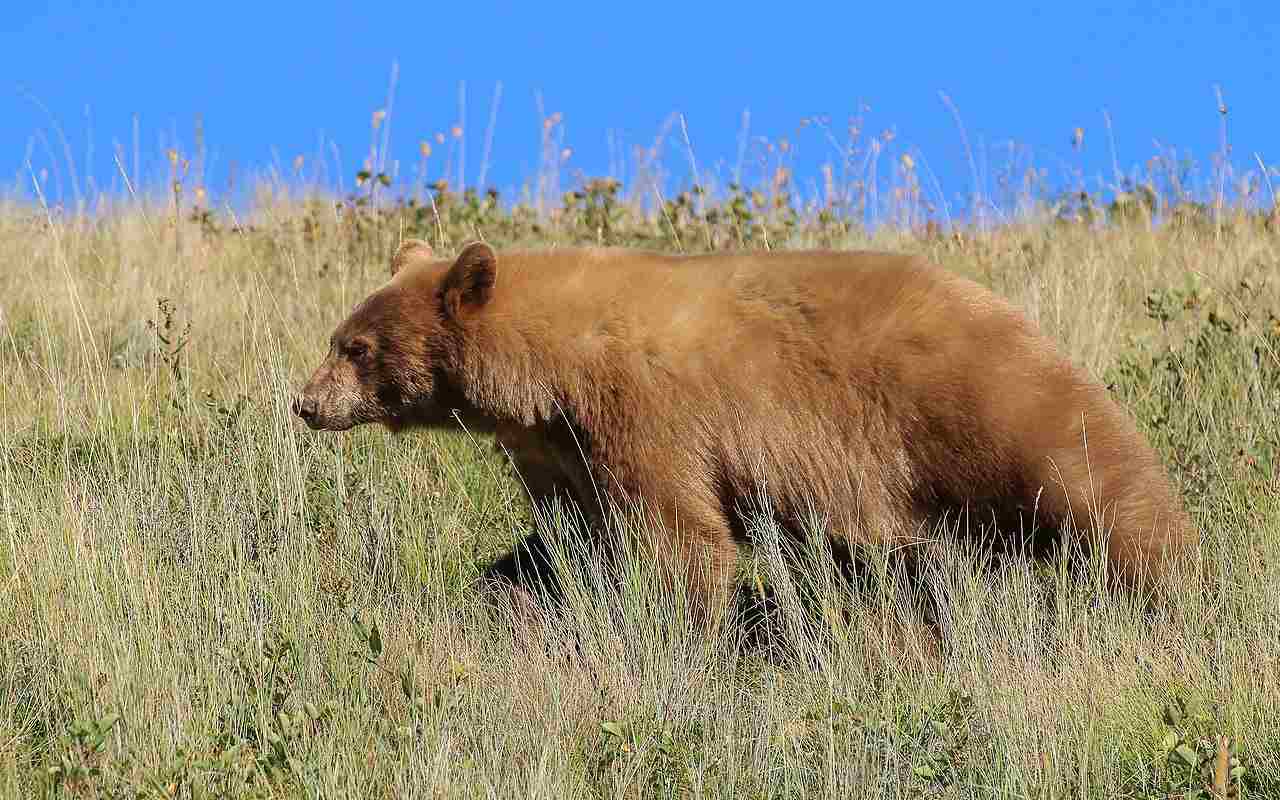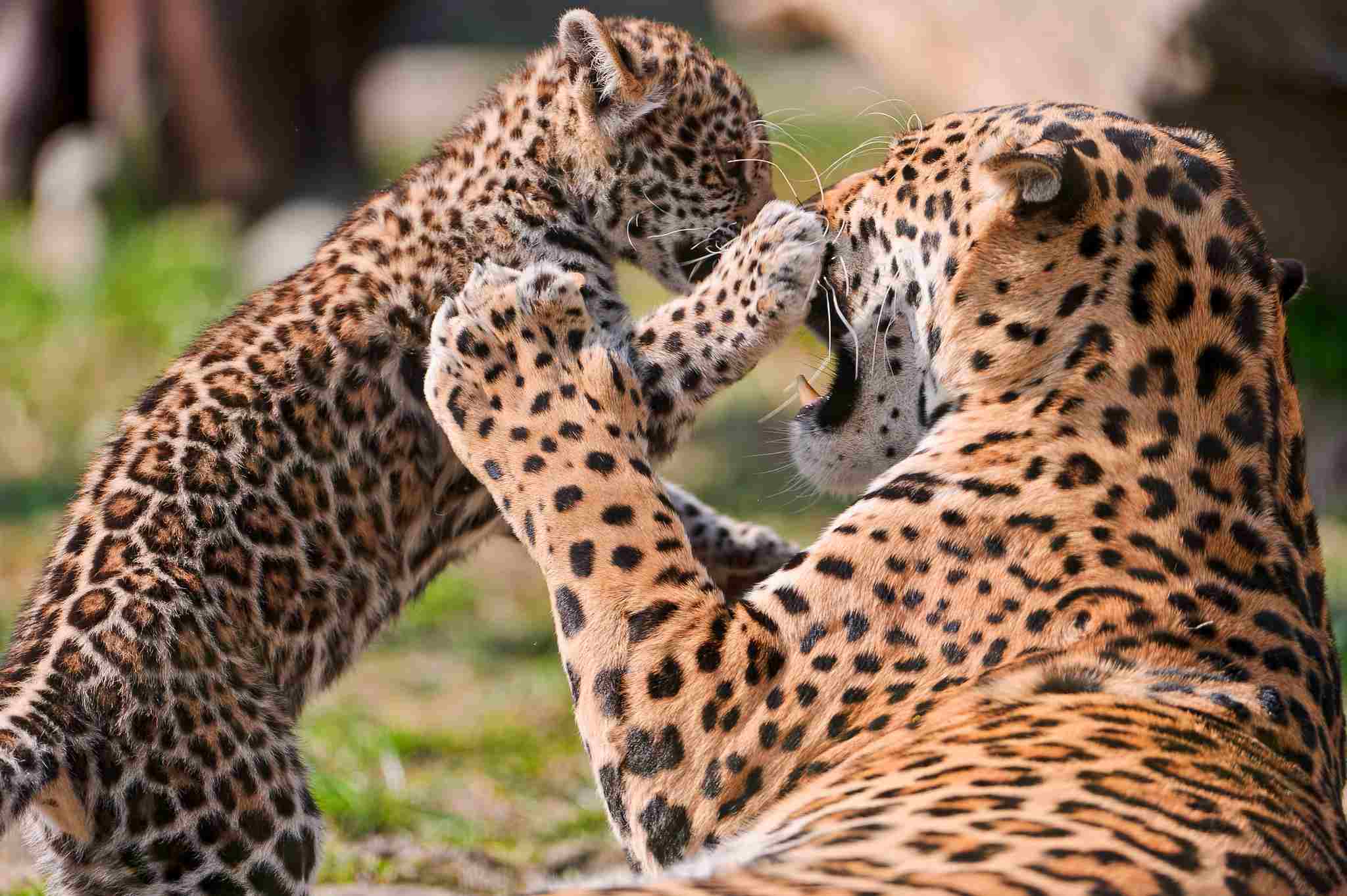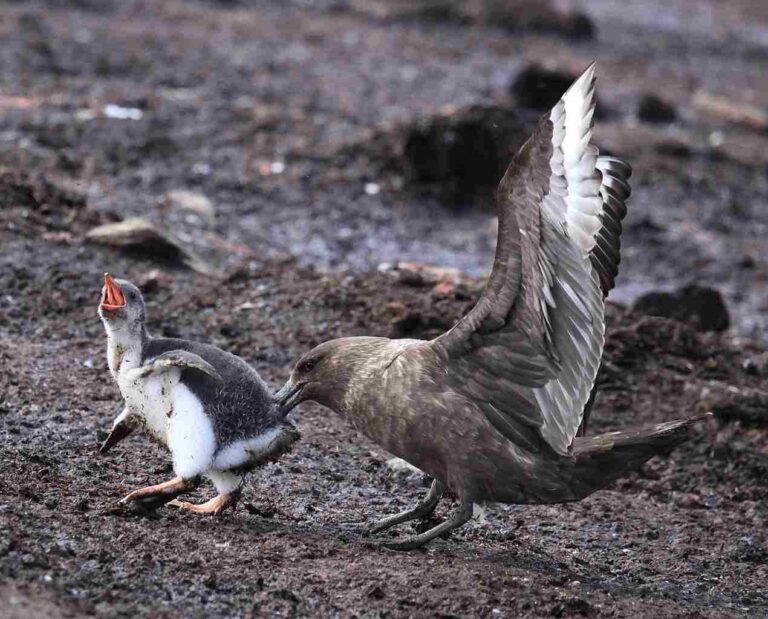Striped Hyena Vs Spotted Hyena Size, Weight, Ecological Comparison
A Spotted Hyena has the advantage over a Striped Hyena in a physical confrontation due to its larger size and heavier weight. Additionally, the Spotted Hyena is slightly stronger, more aggressive, and has a higher predatory capacity. These factors, along with others, will be used to compare the two hyena species in this article.
Reasons Why a Spotted Hyena Will Win a Striped Hyena In a Fight/Physical Confrontation
I). Size and Weight Advantages
One of the main reasons why a Spotted Hyena would win in a fight or physical confrontation against a Striped Hyena is its size and weight advantage. The Spotted Hyena is significantly larger and heavier than the Striped Hyena, giving it a greater physical presence and strength.
With an average length of 4 to 5 feet and a shoulder height of around 2.5 feet, the Spotted Hyena towers over the Striped Hyena, which measures about 3 to 4 feet in length and stands at a shoulder height of approximately 2 feet.
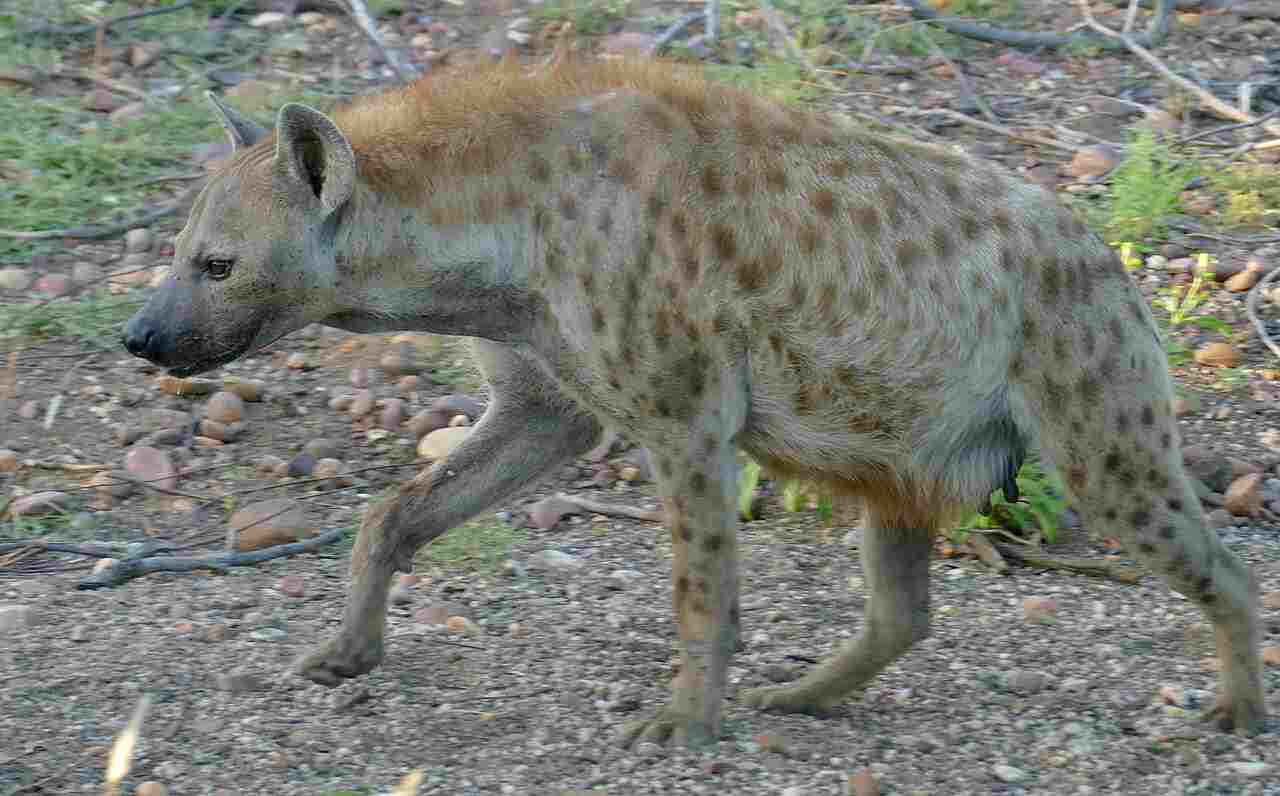
II). Higher Aggressiveness and Predatory Capacity
In addition to its size advantage, the Spotted Hyena also possesses a higher level of aggressiveness and predatory capacity compared to the Striped Hyena. Spotted Hyenas are known for their bold and fearless nature, often engaging in confrontations with other predators, including lions. They have a reputation for being highly opportunistic hunters and scavengers, capable of taking down large prey and defending their kills against other competitors.
The Striped Hyena, on the other hand, is generally more timid and less confrontational. It relies more on scavenging and feeding on carrion rather than actively hunting. While it can defend itself when necessary, the Striped Hyena lacks the same level of aggression and predatory skills as its Spotted counterpart.
These factors, the size and weight advantages of the Spotted Hyena, combined with its higher aggressiveness and predatory capacity, give it a clear edge in a fight or physical confrontation with a Striped Hyena.
*Details of Comparison
1). Taxonomy
The taxonomy of the Striped Hyena (Hyaena hyaena) and the Spotted Hyena (Crocuta crocuta) reveals interesting differences between the two species. Both hyenas belong to the family Hyaenidae, but they are classified into different genera. The Striped Hyena falls under the genus Hyaena, while the Spotted Hyena belongs to the genus Crocuta.
The distinction in taxonomy reflects the distinct evolutionary paths and characteristics of these hyenas. While both species share similarities in their ecological roles as scavengers and hunters, their genetic and morphological differences set them apart.
The Striped Hyena is characterized by its striped coat, which provides effective camouflage in its arid habitats. On the other hand, the Spotted Hyena boasts a spotted coat, which aids in its concealment within the grasslands and savannas it inhabits. These distinct coat patterns are a result of their divergent evolutionary histories.
2). Appearance
The appearance of the Striped Hyena and the Spotted Hyena showcases distinct differences between the two species. One notable difference lies in their coats, fur, and skin. The Striped Hyena possesses a unique striped coat, which serves as effective camouflage in its arid habitats. This striped pattern allows it to blend seamlessly with the surrounding environment, making it difficult for predators and prey to spot.
On the other hand, the Spotted Hyena boasts a spotted coat, which aids in its concealment within the grasslands and savannas it inhabits. These spots provide excellent camouflage, allowing the Spotted Hyena to remain hidden while stalking its prey.
In terms of stature and build, the two hyenas also differ. The Striped Hyena is generally smaller in size compared to the Spotted Hyena. It has a more compact and slender build, with a shorter body length and height at the shoulders. In contrast, the Spotted Hyena is larger and more robust, with a longer body length and taller stature. This difference in size and build can be attributed to their distinct ecological niches and hunting strategies.
In general, the appearance of the Striped Hyena and the Spotted Hyena showcases their unique adaptations to their respective habitats. While the Striped Hyena’s striped coat provides effective camouflage in arid environments, the Spotted Hyena’s spotted coat allows it to blend seamlessly into grasslands and savannas.
3). Size
When comparing the size of the Striped Hyena and the Spotted Hyena, there are noticeable differences in their total body length and height at the shoulders. The Striped Hyena is generally smaller in size compared to the Spotted Hyena. It has a more compact and slender build, with a shorter body length and height at the shoulders. This smaller size allows the Striped Hyena to navigate through narrow spaces and burrows more easily.
On the other hand, the Spotted Hyena is larger and more robust. It has a longer body length and taller stature, making it a formidable presence in its habitat. This larger size gives the Spotted Hyena an advantage when it comes to hunting and competing for resources.
The difference in size between these two hyenas can be attributed to their distinct ecological niches and hunting strategies. The Striped Hyena’s smaller size allows it to be more agile and maneuverable in its arid environments, while the Spotted Hyena’s larger size provides it with the strength and power needed to take down larger prey.
4). Weight
The Spotted Hyena is known for its larger size and robust build, which translates into a higher weight compared to the Striped Hyena.
On average, adult male Spotted Hyenas can weigh between 110 to 190 kilograms (240 to 420 pounds), while adult females can weigh between 90 to 160 kilograms (200 to 350 pounds). In contrast, adult male Striped Hyenas typically weigh around 55 to 90 kilograms (120 to 200 pounds), and adult females weigh around 45 to 75 kilograms (100 to 165 pounds).
The difference in weight between these two hyenas is influenced by various factors, including their ecological niches and dietary preferences. Spotted Hyenas are known for their scavenging behavior and ability to take down large prey, which requires a higher body mass to exert the necessary force. In contrast, Striped Hyenas have a more varied diet, including small mammals, insects, and fruits, which may not require as much strength and weight.
Generally, the Spotted Hyena’s larger size and weight give it an advantage when it comes to competing for resources and taking down larger prey, while the Striped Hyena’s smaller size and weight allow it to thrive in its arid environments and adapt to a more diverse diet.
5). Speed and Agility
The Spotted Hyena is known for its impressive speed and agility, allowing it to chase down prey and cover long distances efficiently. With its long legs and powerful muscles, the Spotted Hyena can reach speeds of up to 60 kilometers per hour (37 miles per hour). This speed advantage enables it to outrun and catch a wide range of prey, including wildebeests and zebras.
On the other hand, the Striped Hyena may not possess the same level of speed as its Spotted counterpart. While it is still capable of running at a decent pace, it generally relies more on its agility and maneuverability to navigate its arid habitats. The Striped Hyena’s ability to change direction quickly and squeeze through tight spaces allows it to evade predators and access food sources that may be hidden or protected.
In terms of agility, both hyena species exhibit impressive dexterity. They can make sharp turns, leap over obstacles, and climb with relative ease. However, the Spotted Hyena’s larger size and more robust build may slightly hinder its agility compared to the Striped Hyena, which is more streamlined and adapted to its environment.
6). Bite Force
The bite force of a hyena is a crucial factor in determining its hunting and feeding capabilities. When comparing the bite force of the Spotted Hyena and the Striped Hyena, it is important to consider their respective jaw structures and hunting techniques.
The Spotted Hyena possesses one of the strongest bite forces among all mammals, with an average bite force of around 1,100 pounds per square inch (psi). This powerful bite allows the Spotted Hyena to crush bones and access the nutrient-rich marrow inside. With its robust skull and strong jaw muscles, the Spotted Hyena can exert immense pressure when biting down on its prey.
On the other hand, the Striped Hyena has a slightly lower bite force compared to its Spotted counterpart, with an average bite force of around 900 psi. While still formidable, the Striped Hyena’s bite force is slightly less powerful, which may affect its ability to crush bones as effectively as the Spotted Hyena.
It is important to note that bite force alone does not determine the outcome of a confrontation between these two hyena species. Factors such as size, agility, and overall physical capacity also play significant roles in determining the outcome of a fight.
While the Spotted Hyena possesses a stronger bite force compared to the Striped Hyena, it is essential to consider the overall physical capabilities of each species when evaluating their hunting and feeding abilities.
7). Overall Physical Capacity (Which is Stronger?)
In terms of size, the Spotted Hyena is generally larger and more robust than the Striped Hyena. This size advantage gives the Spotted Hyena an edge in terms of physical strength and power. Additionally, the Spotted Hyena’s strong jaw muscles and powerful bite force contribute to its overall physical capacity.
On the other hand, the Striped Hyena may compensate for its smaller size with its agility and speed. While not as physically imposing as the Spotted Hyena, the Striped Hyena’s ability to maneuver quickly and evade attacks can be advantageous in certain situations.
When comparing the overall physical capacity of these two hyena species, it is important to consider their specific adaptations and hunting techniques. The Spotted Hyena’s larger size and powerful bite force may give it an advantage in a direct confrontation, but the Striped Hyena’s agility and speed can make it a formidable opponent.
8). Habitat
The Spotted Hyena is primarily found in sub-Saharan Africa, inhabiting a wide range of ecosystems including savannas, grasslands, woodlands, and even mountainous regions. This adaptability allows the Spotted Hyena to thrive in diverse environments and take advantage of various food sources. They are known to form large social groups called clans, which occupy and defend territories within their habitat.
On the other hand, the Striped Hyena has a more limited geographic range, primarily found in arid and semi-arid regions of North Africa, the Middle East, and the Indian subcontinent. They are well-adapted to desert environments and can survive in harsh conditions with limited water availability. Striped Hyenas are solitary animals, with each individual occupying its own territory.
While both hyena species have adapted to different habitats, the Spotted Hyena’s ability to inhabit a wider range of ecosystems gives it an advantage in terms of resource availability and competition. However, the Striped Hyena’s specialization in arid environments allows it to thrive in areas where other predators may struggle to survive.
Therefore, the habitat of the Spotted Hyena and the Striped Hyena significantly influences their behavior, social structure, and survival strategies. The Spotted Hyena’s adaptability to various ecosystems gives it an advantage in terms of resource availability, while the Striped Hyena’s specialization in arid environments allows it to thrive in harsh conditions.
9). Lifespan
The Spotted Hyena has a longer lifespan than the striped hyena, typically living up to 25 years in the wild. In captivity, they can live even longer, reaching up to 40 years. This extended lifespan can be attributed to their social structure, which provides protection, access to resources, and reduced predation risk.
On the other hand, the Striped Hyena has a shorter lifespan compared to its spotted counterpart. In the wild, they generally live up to 12 years, with some individuals reaching 15 years. In captivity, their lifespan can be slightly longer, ranging from 15 to 20 years. The shorter lifespan of the Striped Hyena can be attributed to various factors, including their solitary nature, limited access to resources, and higher predation risk.
Therefore, the Spotted Hyena’s longer lifespan can be attributed to their ability to form strong social bonds within their clans, which provides them with various advantages for survival. In contrast, the Striped Hyena’s solitary lifestyle and limited access to resources contribute to their shorter lifespan. These differences in lifespan highlight the impact of social structure and resource availability on the longevity of these hyena species.
10). Behavior
The behavior of the Spotted Hyena and the Striped Hyena differs in several aspects.
Feeding behavior is one area where these hyena species show distinct differences. Spotted Hyenas are known for their scavenging behavior, often stealing kills from other predators or hunting in groups. They have powerful jaws and can consume bones and tough hides. On the other hand, Striped Hyenas are more opportunistic feeders, relying on carrion, insects, and small mammals. They have a more varied diet compared to their spotted counterparts.
Aggression is another behavioral difference between the two species. Spotted Hyenas are highly social animals, living in large clans with a complex hierarchy. They exhibit intense aggression within their clan, especially during feeding or defending their territory. In contrast, Striped Hyenas are solitary animals, and aggression is less common. They are more likely to retreat or use vocalizations to communicate their presence.
Vocalization is an important aspect of hyena behavior. Spotted Hyenas are known for their distinctive “laughing” vocalization, which serves as a form of communication within their clan. Striped Hyenas, on the other hand, have a range of vocalizations, including growls, howls, and barks, which they use to communicate with other hyenas and mark their territory.
In terms of social behavior, Spotted Hyenas have a more complex social structure, with a matriarchal society led by dominant females. They exhibit cooperative hunting and have a strong sense of community. Striped Hyenas, being solitary animals, have a more independent lifestyle and do not exhibit the same level of social behavior.
When it comes to parenting, Spotted Hyenas have a unique reproductive system where females have a pseudo-penis and give birth through it. They also have a high level of maternal care, with females nursing and protecting their young. Striped Hyenas, on the other hand, have a more conventional reproductive system and provide less parental care.
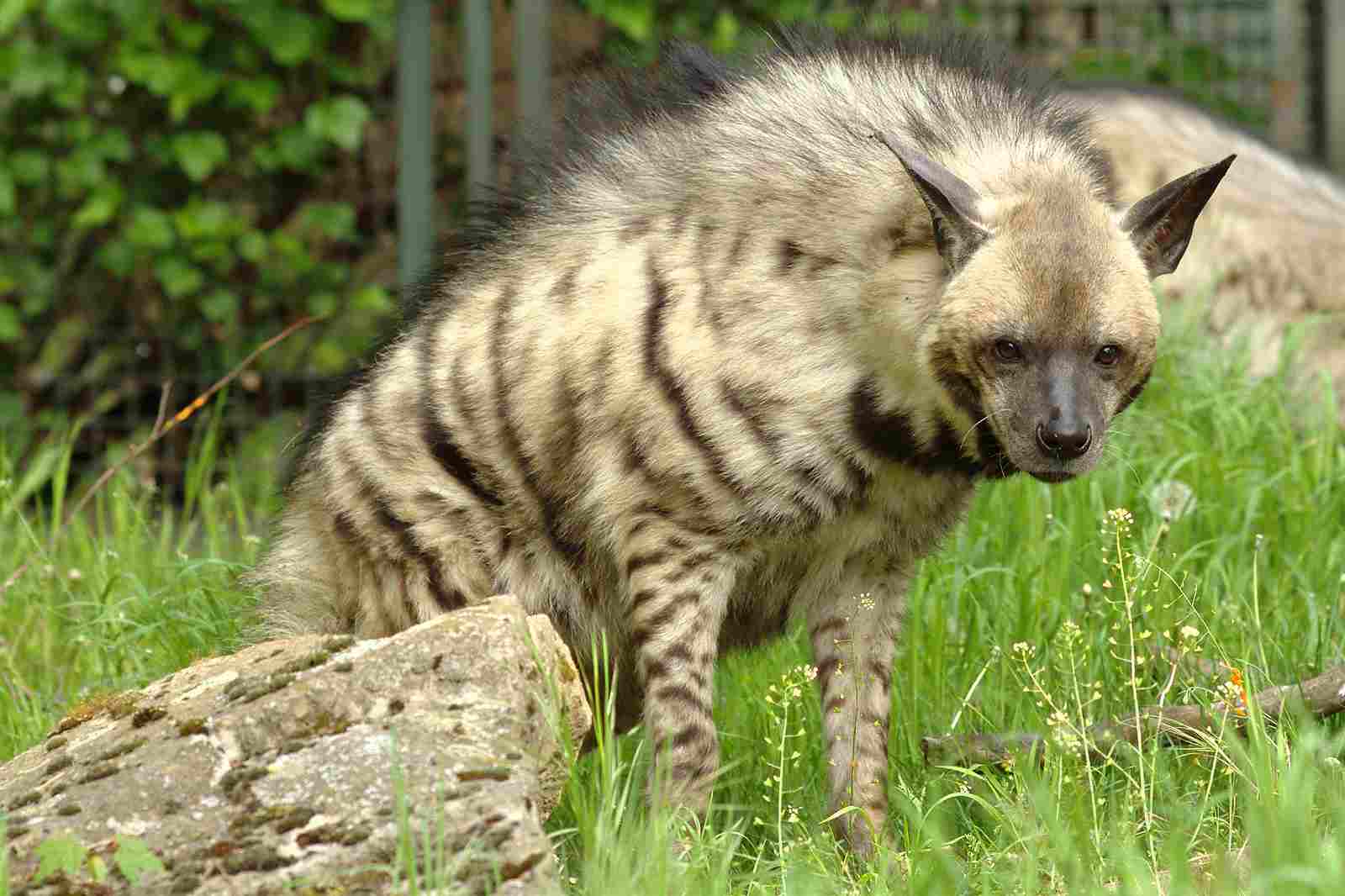
11). Reproduction
In terms of reproductive strategy, both hyena species are viviparous, meaning they give birth to live young. However, there are some notable differences in their reproductive processes.
Gestation period is one area where these hyena species show distinct differences. Spotted Hyenas have a longer gestation period compared to Striped Hyenas, lasting around 110 days. This longer gestation period is due to the unique reproductive system of Spotted Hyenas, where females have a pseudo-penis through which they give birth. In contrast, Striped Hyenas have a gestation period of around 90 days.
When it comes to the number of offspring, Spotted Hyenas typically give birth to one or two cubs, although litters of up to four cubs have been recorded. Striped Hyenas, on the other hand, usually have smaller litters, with one to three cubs being the norm.
The survival rate of hyena cubs varies between the two species. Spotted Hyena cubs have a higher survival rate compared to Striped Hyena cubs. This is partly due to the strong maternal care provided by female Spotted Hyenas, who nurse and protect their young. Striped Hyenas, on the other hand, provide less parental care, which may contribute to a lower survival rate for their cubs.
Therefore, the reproductive strategies of the Spotted Hyena and the Striped Hyena differ in terms of gestation period, litter size, and survival rate of offspring.
12). Danger Posed to Humans
When it comes to the danger posed to humans, both the Spotted Hyena and the Striped Hyena have the potential to come close to human settlements. However, their behavior towards humans differs.
Spotted Hyenas are known to be more aggressive towards humans compared to Striped Hyenas. They have been known to attack and kill humans in certain situations, especially when they feel threatened or when there is competition for food. In some areas, Spotted Hyenas have become habituated to human presence and may scavenge in garbage dumps or prey on livestock, increasing the risk of encounters with humans.
On the other hand, Striped Hyenas are generally more shy and elusive when it comes to interactions with humans. They are less likely to approach human settlements and are not known to be as aggressive towards humans. However, if cornered or provoked, they may defend themselves.
In terms of the rate of human deaths caused, Spotted Hyenas have been responsible for more reported attacks on humans compared to Striped Hyenas. This is likely due to their larger size, more assertive behavior, and higher population densities in certain areas.
If you encounter either species of hyena, it is important to exercise caution and take necessary precautions. Avoid approaching or cornering them, as this may provoke an aggressive response. It is also advisable to secure food sources and garbage to minimize the attraction of hyenas to human settlements.
Therefore, while both hyena species have the potential to pose a danger to humans, Spotted Hyenas are generally more aggressive and have been responsible for more reported attacks on humans compared to Striped Hyenas. Taking precautions and respecting their space can help minimize the risk of negative interactions.
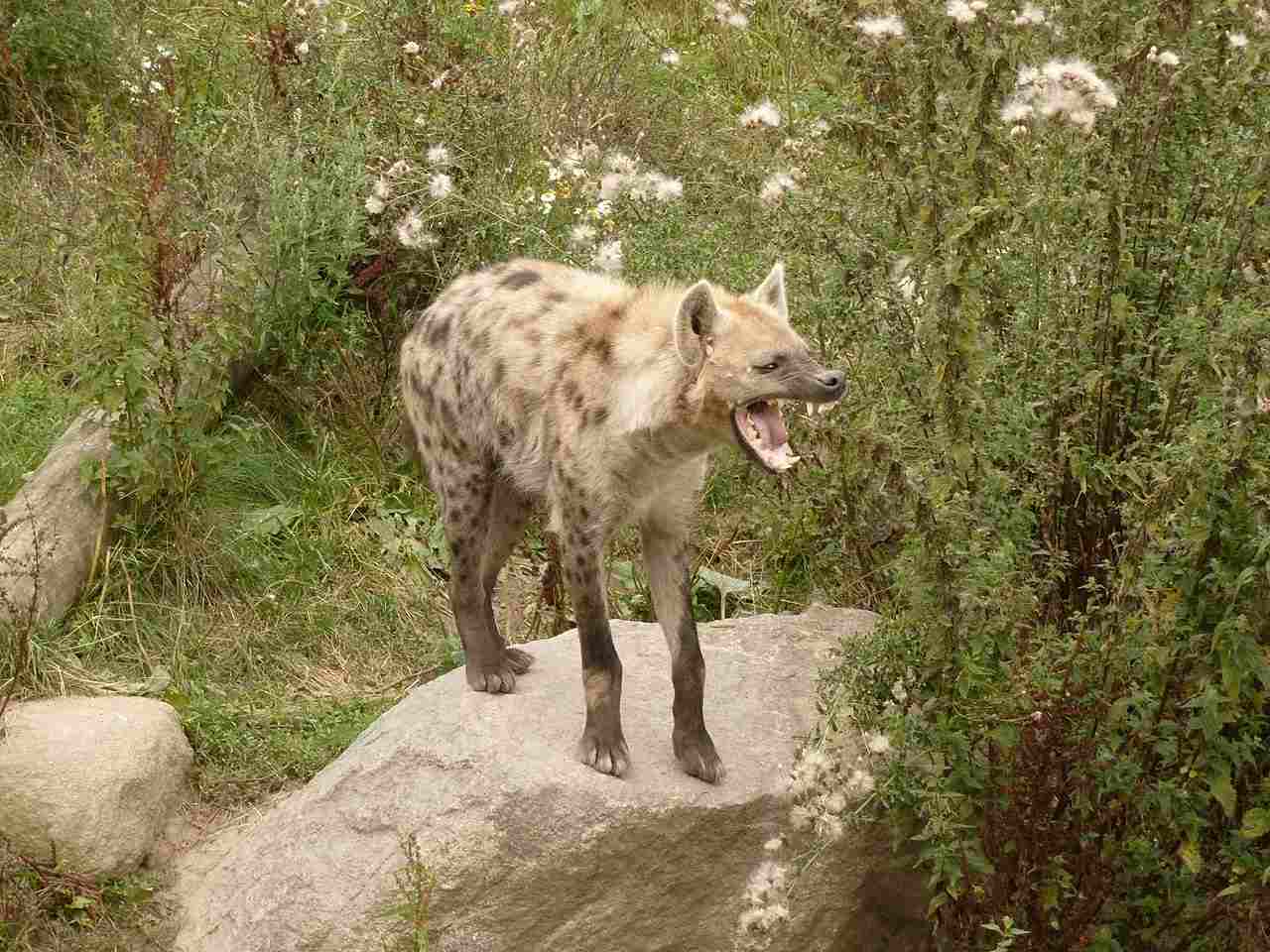
13). Intelligence
When comparing the intelligence of the Spotted Hyena and the Striped Hyena, it is important to consider their cognitive abilities and problem-solving skills. Both species exhibit a high level of intelligence, but there are some differences in their behaviors and adaptations.
Spotted Hyenas are known for their complex social structure and intricate communication system. They live in large clans, where individuals have distinct roles and hierarchies. This social complexity requires a high level of intelligence to navigate and understand the dynamics within the group. Spotted Hyenas also demonstrate problem-solving skills, such as using tools to access food or solving puzzles in captivity.
On the other hand, Striped Hyenas are more solitary and have a less complex social structure. However, they still exhibit intelligence in their ability to adapt to different environments and find food sources. Striped Hyenas are known to scavenge and have been observed using their intelligence to access carcasses that are difficult to reach.
In terms of which species is more intelligent, it is difficult to determine definitively. Both hyenas have unique adaptations and behaviors that showcase their intelligence in different ways. The Spotted Hyena’s social complexity and problem-solving skills highlight their intelligence, while the Striped Hyena’s adaptability and resourcefulness demonstrate their own cognitive abilities.
14). Tracks
When comparing the tracks of the Spotted Hyena and the Striped Hyena, there are some distinct differences that can help identify which species left the mark.
Spotted Hyena tracks are characterized by their large size and unique shape. They have four toes with non-retractable claws, and the front tracks are larger than the hind tracks. The tracks also show a clear imprint of the hyena’s paw pad, which has a rough texture. These tracks are often found in muddy or sandy areas near water sources, as Spotted Hyenas are known to be semi-aquatic.
On the other hand, Striped Hyena tracks are smaller in size compared to the Spotted Hyena. They also have four toes with non-retractable claws, but the front and hind tracks are similar in size. The tracks of the Striped Hyena show a distinct imprint of the hyena’s paw pad, which is smoother compared to the Spotted Hyena. These tracks are commonly found in arid and rocky terrains, as Striped Hyenas prefer drier habitats.
By examining the tracks left behind, researchers and wildlife enthusiasts can determine which species of hyena has been present in an area. The size, shape, and texture of the tracks provide valuable clues about the behavior and habitat preferences of these fascinating creatures.
15). Conservation Status
The conservation status of the Spotted Hyena and the Striped Hyena differs, with one species being endangered or threatened while the other is relatively stable. The Spotted Hyena is listed as a species of “Least Concern” by the International Union for Conservation of Nature (IUCN). Despite facing some localized threats, such as habitat loss and human-wildlife conflict, the Spotted Hyena has a relatively stable population and a wide distribution range across Africa.
On the other hand, the Striped Hyena is facing more significant conservation challenges. It is listed as a species of “Near Threatened” by the IUCN. The main threats to the survival of wild populations include habitat loss, fragmentation, and degradation due to human activities. Additionally, the Striped Hyena is often persecuted due to its association with superstitions and beliefs in some cultures.
Conservation efforts are crucial to ensure the long-term survival of both hyena species. Protecting their habitats, implementing sustainable land-use practices, and raising awareness about the importance of these apex predators are essential steps towards their conservation. Collaboration between governments, conservation organizations, and local communities is necessary to address the threats and promote the coexistence of humans and hyenas.
Therefore, while the Spotted Hyena is relatively stable in terms of conservation status, the Striped Hyena faces more significant challenges and is considered “Near Threatened.” Conservation efforts are vital to safeguard the future of both species and maintain the ecological balance they contribute to in their respective habitats.
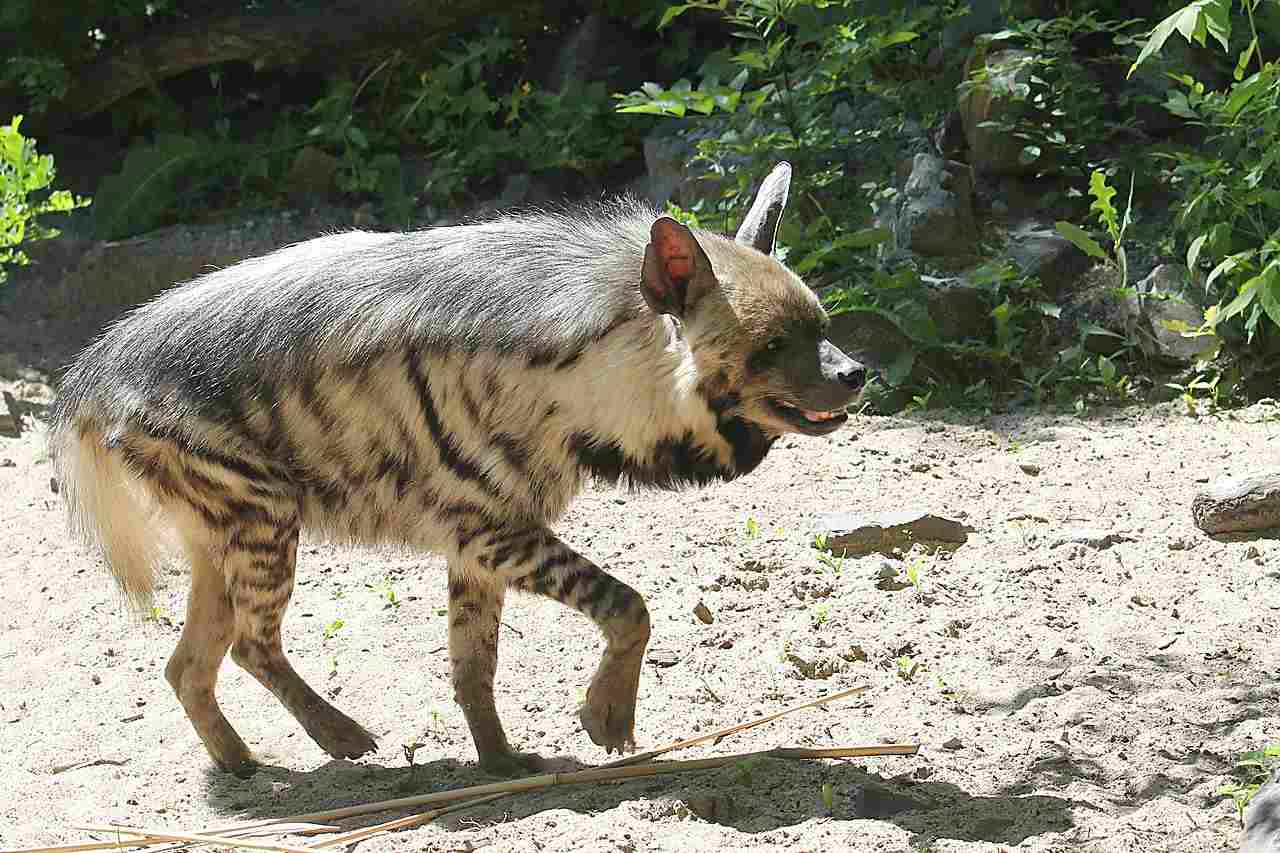
Conclusion
I). SIMILARITIES
In comparing the Spotted Hyena and the Striped Hyena, several similarities can be observed. Both species belong to the same family, Hyaenidae, and share similar physical characteristics such as a robust build, long front legs, and a sloping back. They are also both highly adaptable and can thrive in a variety of habitats, including grasslands, savannas, and even urban areas.
Additionally, both hyena species are known for their intelligence and complex social structures, with hierarchical dominance systems and cooperative hunting behaviors.
II). DIFFERENCES
Despite their similarities, there are notable differences between the Spotted Hyena and the Striped Hyena. One significant difference lies in their appearance. The Spotted Hyena has a more robust build and a distinctive spotted coat, while the Striped Hyena has a slimmer build and a coat with vertical stripes.
Another difference is their size and weight. The Spotted Hyena is larger and heavier, with males weighing up to 190 pounds, while the Striped Hyena is smaller, with males weighing around 90 pounds.
